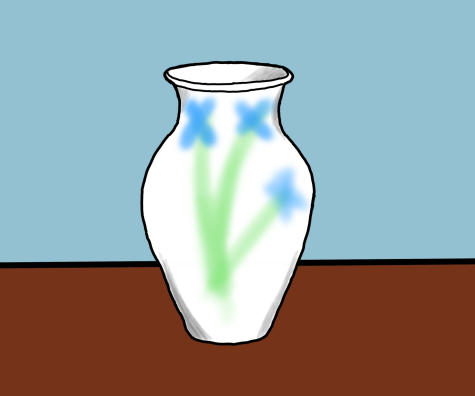Roses are red, violets are blue, what could your bouquet be telling you?
The ‘language’ of flowers blossoms from myths, culture, and history all across the world
February, the month filled with passionate romance. Lovers buy many things for each other, but the most well-known gift to express love is a bouquet of flowers. Due to recent studies, it is shown that almost three quarters of men buy flowers for Valentine’s Day. Flowers are very prestigious creations of nature; although under the surface they have deeper meanings and backgrounds.
The most well-known example of such a flower is the rose. There are over 300 species of roses and 30,000 rose varieties in the world: long-stemmed roses, short-stemmed roses, blue roses, pink roses, and roses of various other colors. But the main rose given as gifts is red. Red is the color of love, so, due to its deep red tint, the rose symbolizes deep affection and desire. This flower’s use of love representation dates all the way back to the times of Ancient Greece, Rome, and Egypt. The rose was sacred to many goddesses, such as Venus and Aphrodite.
The Greeks believed the rose was created by their goddess of love, Aphrodite. The story goes like this: Aphrodite came across her lover, a mortal man named Adonis, who was wounded by a boar and bleeding out. She knelt next to him, crying, and when the mixture of her tears and his blood hit the ground a red rose bush was created. Unfortunately, Adonis was gravely injured and died, but the magical flower lived on.
On the other hand, the Romans have other ideas on who created the rose. They believed the creator to be their goddess of love, Venus. Venus’s legend is quite similar to Aphrodite’s story. Her lover is also known as Adonis, and there was also bloodshed. However, in this story Venus is going to warn her lover about a murder plan against him. As she runs, she gets cut by a thorn bush. Her ankles start to bleed and every drop of blood creates a beautiful red rose bush. Another legend contains the goddess Venus and her son, Cupid. Cupid is a worldwide sponsor for Valentine’s Day. He is often portrayed in movies as a little boy in a diaper with a bow and arrow.
This version of the red rose creation takes place in a white rose garden. Legend states that Cupid got stung by a bee and accidentally shot one of his arrows into the white rose bushes. The bushes grew thorns and ended up pricking Venus’s feet, causing bloodshed. Venus’s blood falling on to the white roses created the red rose.
Then there are the ancient Egyptians. Their goddess of love was named Hathor, but there is not a specific legend pertaining to the creation of the red rose; however, it is said that Queen Cleopatra would cover the floor in rose petals and wear roses for any public appearance. The reason for this was so that she could be the queen who smelled like roses. Cleopatra chose roses over all other flowers because she believed they were the most beautiful.
Not only do ancient goddesses and queens have an effect on the popularity of roses but so do mortal people. In the Victorian era, it was vulgar to show any form of physical affection when in public. So roses were considered a thoughtful gesture of affection, instead of the unacceptable physical ways of affection.
A major figure who helped identify the rose as a symbol of love was Shakespeare. This can be shown throughout many of his plays, especially “Romeo and Juliet.” This story is about two lovers from feuding families. In this play Romeo iconically states, “A rose by any other name would smell as sweet.” This is said to display the message that the names of things do not affect what they really are. A large variety of other writers, artists, and singers have added the rose symbolization in their works.
Another great characteristic of roses is that they have many other uses rather than just gifts. They can be used in medicine, beauty products, perfumes, and decor.
Other flowers may not have such an intense background as the rose, but they can still contribute to a lover’s gift.
For example, take a look at the pink tulip. This flower originated in Central Asia and grew as a wildflower. Pink roses were cultivated in Turkey around 1000 AD and brought over to Europe in the 16th century. They symbolize love, rebirth, and charity. Even though there are many different colored tulips, the pink tulips are the main ones used for gift giving.
Another example would be the orchid. Its name is derived from the word “Paphos,” which is the name of the temple where Aphrodite was worshiped. This flower was eaten by many, including the Greeks and the Aztecs, and seen as a luxurious gift in the Victorian era. Orchids symbolize love, fertility, and elegance.
A picture might be worth a thousand words, but sometimes flowers can get the message across just fine.

Your donation will support the student journalists of Saint Viator High School. Your contribution will allow us to purchase equipment and cover our annual website hosting costs.








